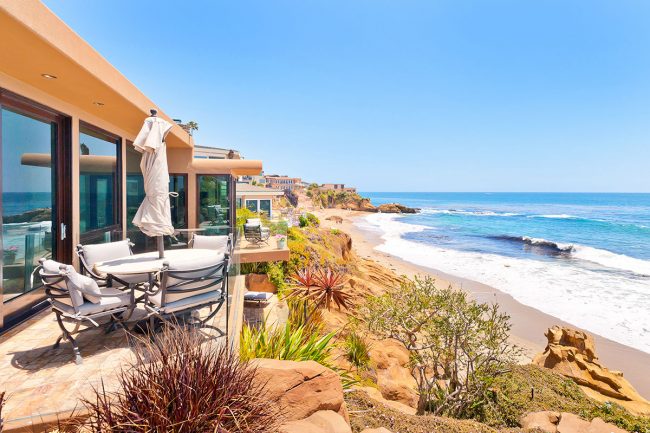If you’ve been a vacation rental host for a long, you must have considered buying another home to diversify your holdings. Adding a second location may truly help your company grow. The danger of purchasing a home that doesn’t generate enough visitors or is too costly to maintain exists, however.
It might be difficult to choose which properties to invest in, but there are real estate investing algorithms that can help you decide what could or might not be a smart investment. The cap rate is one such formula. Let’s look more closely.
What is cap rate?
A real estate investment’s rate of return is gauged by the capitalization rate, often known as the cap rate. It calculates the percentage gained or lost over a certain amount of time, in other words. To evaluate which will be a better investment, you compare the cap rate that has been established to the property’s interest rate.
It’s crucial to keep in mind that the cap rate is often used to contrast the dangers associated with purchasing numerous commercial properties. It may not be as exact a measure, even though you can use it for single-family houses or to compare specific properties.
Keep in mind that there are several factors to take into account while assessing real estate options. To acquire a thorough picture of the enterprise, take in mind other elements such as the location and property qualities.
How to determine the cap rate?
Capitalization Rate = (Net Operating Income/Value)*100 is a straightforward calculation.
Therefore, the cap rate would be 10% if a property just sold for $1,000,000 and had a $100,000 net operating income.
By deducting the expenditures from the gross operating income, the net operating income can be computed. The overall revenue made from renting out the home as a vacation rental is the gross operating income. It may be discovered by subtracting the prospective rental revenue from the vacancy rates. The ongoing expenditures of maintaining a property are known as its operational expenses.
You divide this sum by the cost of the property after arriving at it. There is considerable disagreement about whether this should represent the purchase price or the current market value, although the latter is more often used. You may determine the amount by looking at the property data or by using an online tool for estimating house values. After that, you increase this figure by 100 to get a percentage.
A Decent Cap Rate is What?
Although there is no specific threshold for what constitutes a successful investment, most investors agree that a return of between 5% and 10% is ideal. Everything is dependent on the expected rate of return. While some investors prefer a slower rate of return on their assets, others could choose more rapid growth.
In general, a greater cap rate compared to a smaller cap rate might be seen as riskier. Others continue by explaining that if the cap rate exceeds the interest rate, it is probably a solid investment and you may anticipate making money. As opposed to this, if the cap rate is lower than the interest rate, the investment is riskier and you will need to depend on property appreciation to recoup your original investment.
Additionally, there are other elements that the cap rate calculation does not account for, such as sentimental value or possible equity development. It would not be a terrible idea to choose the home with the lower cap rate if you are choosing between a vacation rental property with a cap rate of 5% and one with a cap rate of 2%, and the 2% is your dream home. It simply implies that it can take a little longer for the property to begin turning a profit.
What factors influence Cap Rate?
Cap rates are influenced by a variety of variables, so understanding them is crucial for making an educated choice. The following are some elements that affect the cap rate:
- Location: A property in a desirable location may have a lower cap rate than a property in a more burgeoning area with a lower rent since it has a better market value and higher rent rate.
- Market size: Rates will likely be lower in highly competitive markets than in smaller, more specialized industries where investing carries a greater risk.
- Growth potential: Since cap rates often don’t account for prospective growth, properties in expanding markets may see a change in cap rates.
- Available inventory: The number of properties that are up for sale in a region might affect cap rates since demand increases as supply decreases.
- Property type: Different property kinds have different cap rates. As an example, commercial real estate often has a higher cap rate than residential real estate.
Vacation Rentals and Cap Rates
As we all know, a cap rate is an excellent instrument for assessing the riskiness of investment real estate, and it may assist you in determining whether or not to buy a property to be utilized as a holiday rental. Evaluating and accumulating information on the other properties in the region may also assist you in deciding if a given location or city would make a successful rental location; this way, you will always obtain the greatest return on investment.
When considering cap rates, be crucial to keep in mind that holiday rentals vary somewhat from typical properties. Because they are not occupied all year round, expenditures and running costs might change depending on the number of visitors, the location, the kind of property, and the property management strategy. To counteract its seasonality, it is advised to invest in a vacation rental with a high cap rate. Spend some time calculating these costs, along with those for utilities and taxes, since they all affect your estimate and you want to obtain the most exact reading possible to completely comprehend your investment.
In conclusion, incorporate cap rate while evaluating real estate metrics if you want to make a wise property investment to advance your vacation rental company. Choose investment properties wisely, and you will undoubtedly gain.









